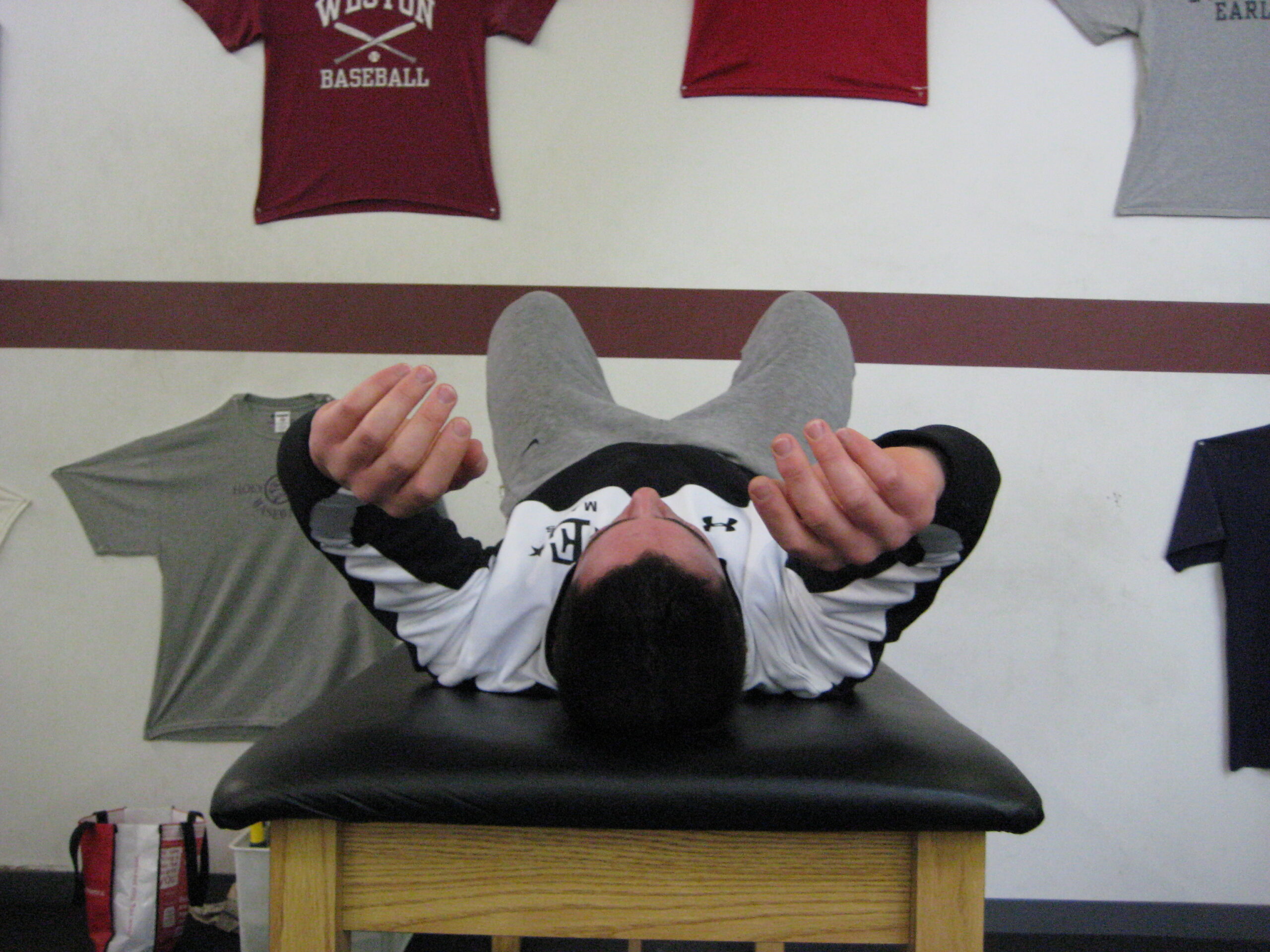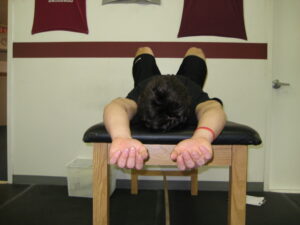
The Overhead Lunge Walk: My Favorite “Catch-All” Assessment
We spend a good chunk of our lives standing on one-leg. Obviously, that means we need to train on one leg, but it’s also important that fitness professionals and rehabilitation specialists assess folks when they’re in single-leg stance, too. Enter the overhead lunge walk, which is likely my favorite assessment because of just how comprehensive it is.
Why is it so great? Let’s examine it, working from the upper extremity to the lower extremity.
First, you can evaluate whether someone has full extension of the elbows. Just tell folks to “reach the fingers to the sky.” In a baseball population, as an example, you can quickly pick up on an elbow flexion contracture, as it’s quick and easy to make a comparison to the non-throwing side.
Additionally, you can screen for congenital laxity, as a lot of hypermobile (loose jointed) folks will actually hyperextend the elbows during the overhead reach.
At the shoulder girdle, you can evaluate whether an individual has full shoulder flexion range of motion:
You can also tell whether the aforementioned hypermobile folks actually move excessively at the ball-and-socket joint of the shoulder, as they’ll actually go too far into flexion instead of moving through the shoulder blades.
You can determine whether an individual has an excessively kyphotic, neutral, or extended thoracic spine. If they’re kyphotic, they’ll struggle to get overhead without compensation (arching the lower back or going into forward head posture). If they’ve got an excessively extended thoracic spine, they’ll actually go too far with the overhead reach (hands will actually wind up behind the head if it’s combined with a very “loose” shoulder).
You can tell whether an individual is able to fully upwardly rotate the shoulder blades in the overhead position.
You can tell whether someone preferentially goes into forward head posture as a compensation for limited shoulder flexion, poor anterior core control, or a lack of thoracic spine extension or scapular posterior tilt.
You can evaluate whether an individual has enough anterior core control to resist extension of the lumbar spine (lower back) during overhead reaching. This is a great test of relative stiffness of the rectus abdominus and external obliques relative to the latissimus dorsi.
You can evaluate whether an individual is in excessive anterior or posterior pelvic tilt from the side view.
Also from the side view, you can determine whether the athlete hyperextends the knees in the standing position.
With the lunge, you can see if an athlete is quad dominant – which is clearly evidenced if the stride is short and the knee drifts out past the toes of the front leg. You can also venture a guess as to whether he or she has full hip extension range of motion.
Also with the lunge, you can determine how much control the athlete has over the frontal and transverse planes; does the knee cave in significantly?
You can make a reasonably good evaluation of foot and ankle function. Does the ankle collapse excessively into pronation? Or, does he stay in supination and “thud” down?
Does the athlete handle the deceleration component effectively, indicating solid eccentric strength in the lower extremity?
As you can see, this assessment can tell you a ton about someone’s movement capabilities and provide you with useful information for improving your program design. Taking it a step further, though, it goes to show you that if you select the right “general” assessments, you can make your assessment process much more efficient.






